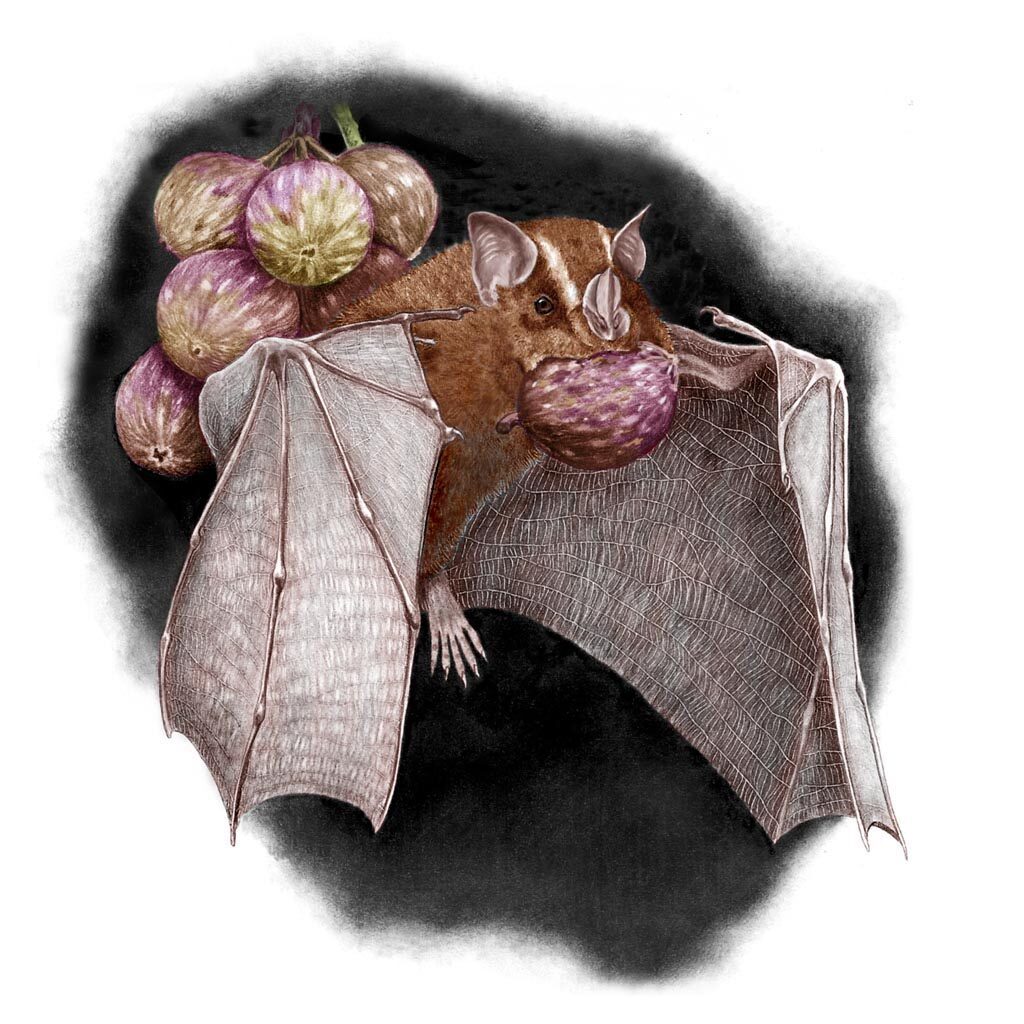Great Fruit-eating Bat

The great fruit-eating bats live in harems from Mexico to Brazil, with one male and up to fifteen females roosting together in tree cavities or along branches (and sometimes in caves) 8’ – 85’ above the ground. Harems are larger in summer when the trees have a lot of fruit, but break up into smaller groups in the colder months when fruit is more scarce. Regardless of its size, each harem has only one male.
It is relatively easy to spot a great fruit-eating bat when it emerges at dusk to forage, because it has a wingspread of almost two feet. If you have a close-up view, the pointed flap of skin above its nose, which probably helps in echolocation as it flies around at night, is another identifying feature. Also look for two white streaks on its face.
It may be quite far between fruiting trees in the tropical forest, so the long wingspan helps a fruit bat travel from tree to tree. On moonlit nights, it flies and hovers for less time, possibly to avoid being noticed by owls and other predators. In turn, the bat preys on insects it comes across while foraging.
Fig trees are like a candy store to a fruit bat. It eats other fruit as well, bananas, custard apples, papayas, etc., but fig trees bear great amounts of fruit and are abundant in the jungle, so they’re a “main dish” for fruit hungry bats. Fruits are generally carried away from the fruiting tree to a convenient branch for eating, which means seeds get dropped or pooped far from the mother tree, making fruit bats an important part of seed dispersal and essential in maintaining the health of the forests. More info can be found here.